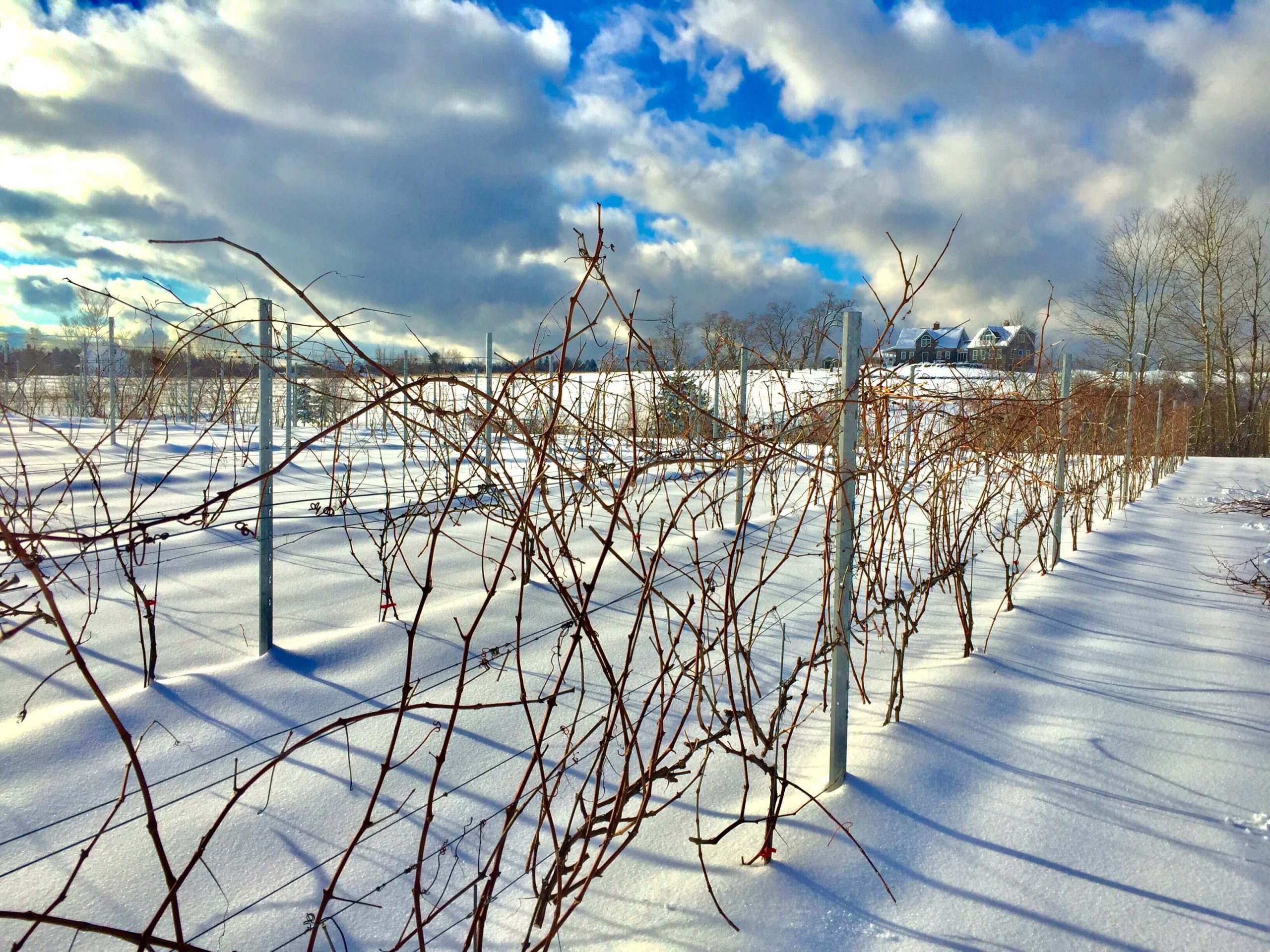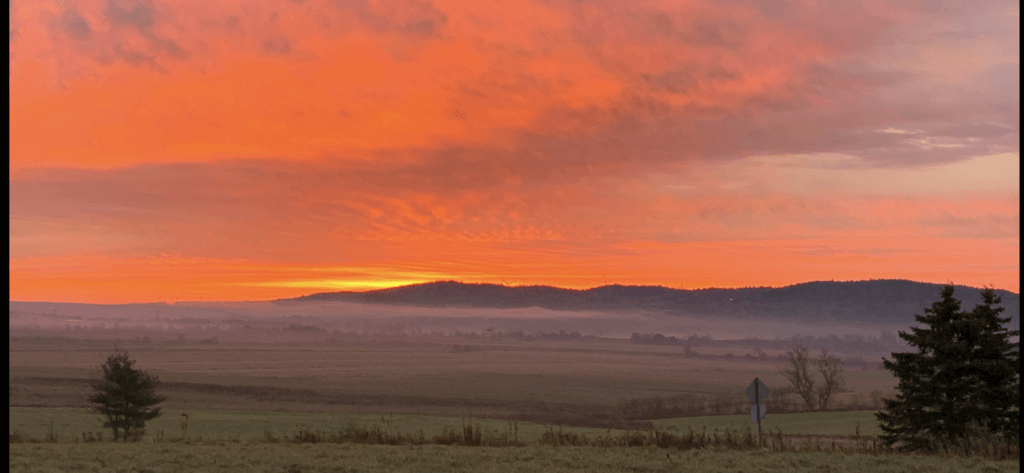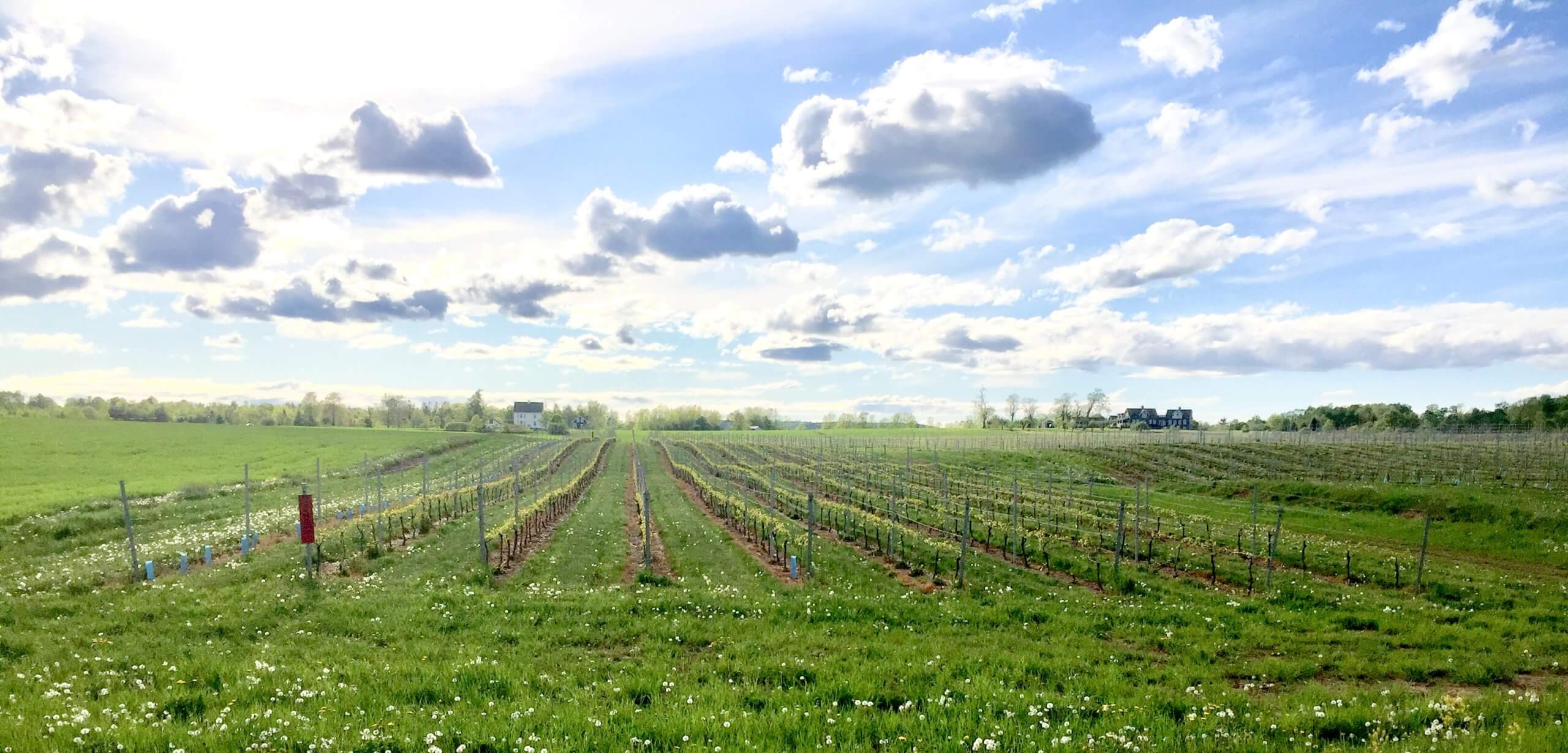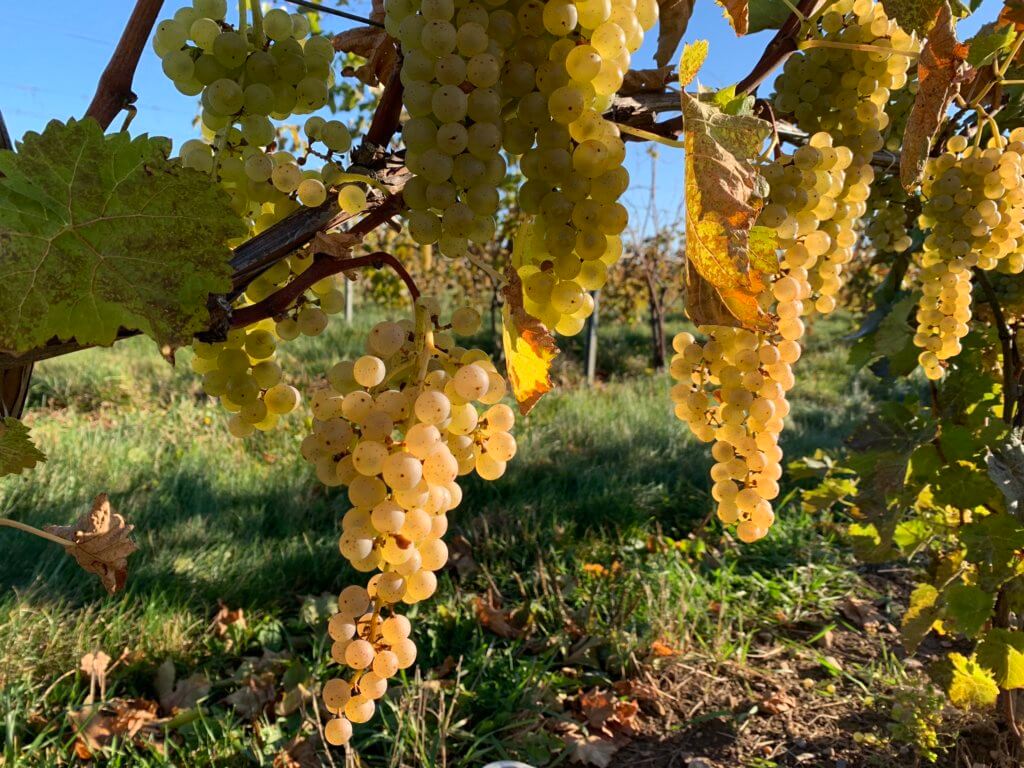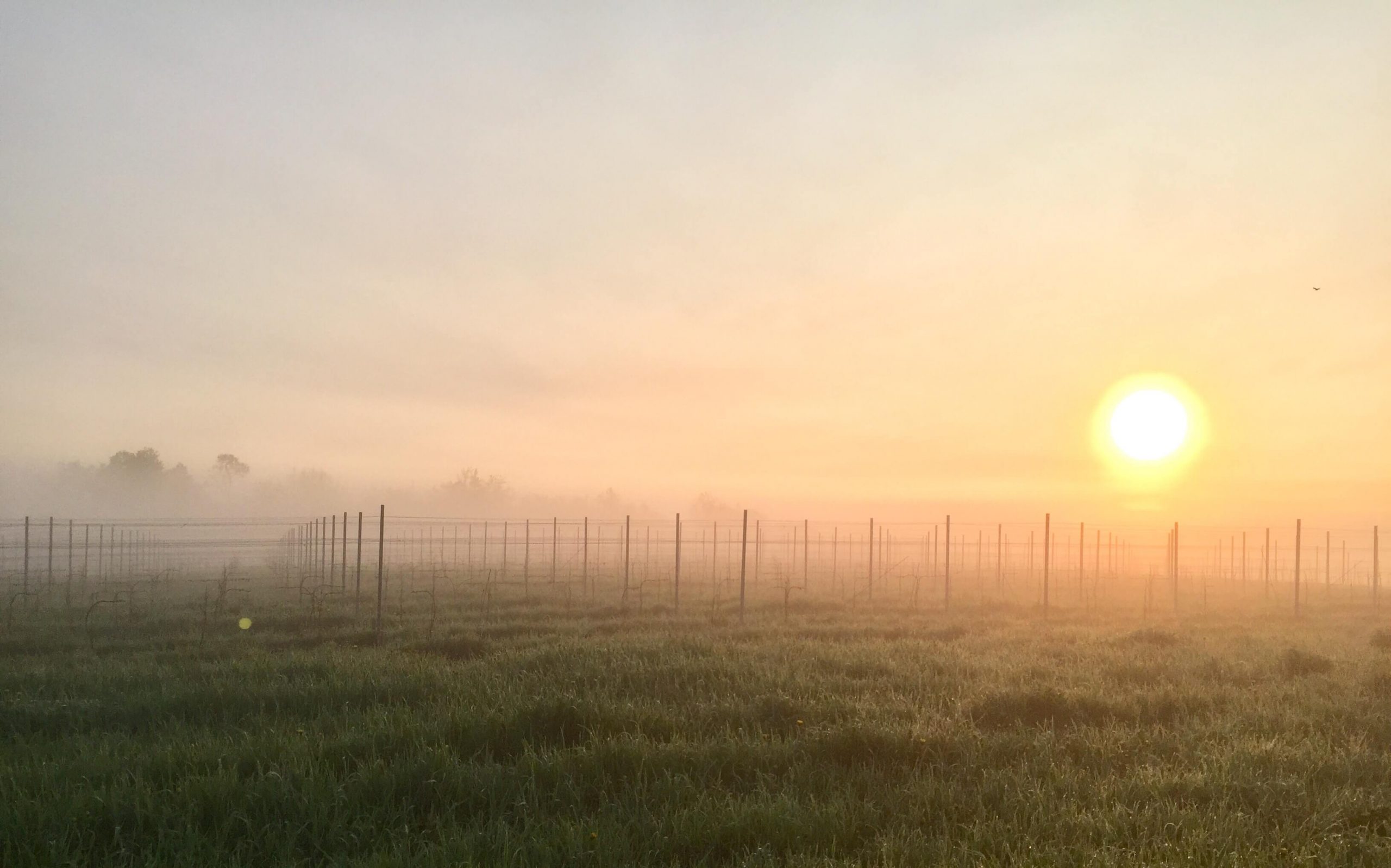SUMMARY
- The winter of 2017/18 was a benign affair. The maximum low temperature at Falmouth was -17 degrees C. There was very little snowfall and pruning could be done most days throughout the winter. Consequently 2 workers were able to prune and tie down 21 acres of vines. Eleven additional acres were new plantings with only topping required. Spring was cold and wet with small amounts of frequent, unseasonable snow followed by lots of rain.
VINIFERA VINES
- There is no doubt that vinifera vines are a more difficult plant to grow compared to the hybrids. The loss rate for the Riesling and Chardonnay was around 5-8% last year and these dead plants will be replaced this spring. Almost all of this loss was associated with crown gall formation in the lower trunk. The injury that preceded the crown gall is not entirely clear but probably related to winter trunk splinting aggravated by low soil potassium. This past fall potassium was sprayed three times on the canopy in the late summer and granular fertilizer applied once in the fall. Hopefully this will alleviate the damage. Over cropping last year (3 tons/acre) on 3 year old vines may have contributed. Trunk damage due to injury caused in year one and two by improper use of the grape hoe might have contributed. Numerous vine rods were bent due to poorly set parameters on the hoe. This has been corrected. Leaf analysis in late summer revealed high Nitrogen which might have slowed winter acclimatization.
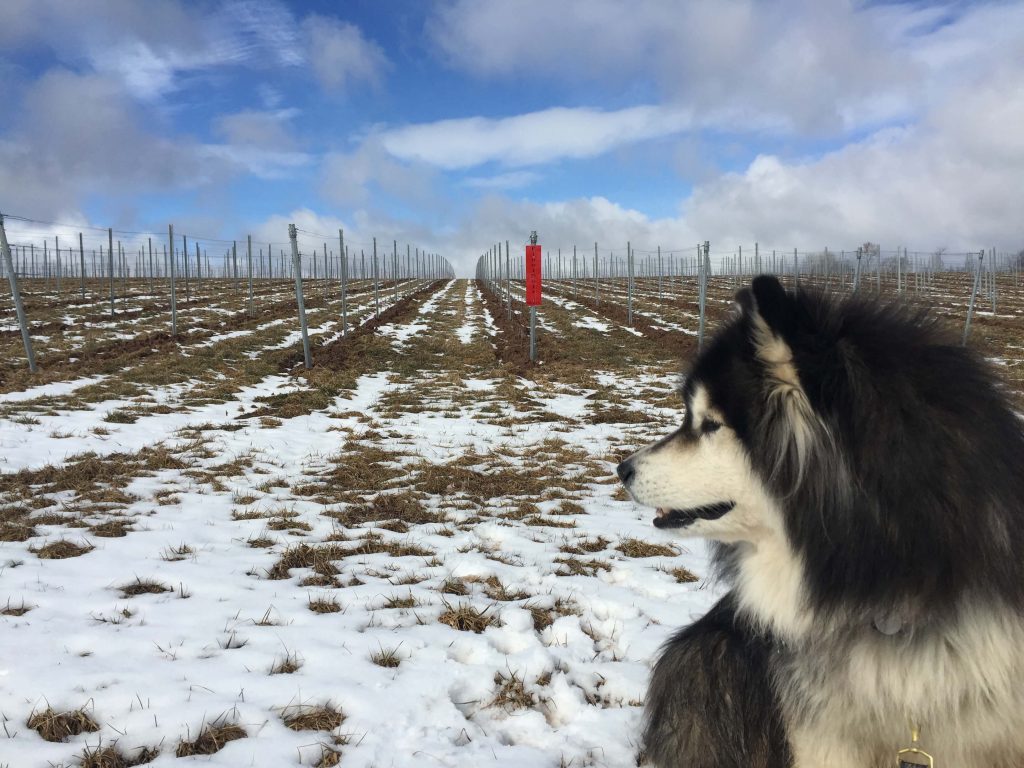
CABERNET FOCH
- The crown gall found in the vines planted in 2015 played havoc with the vines and the yield in 2017 was low, although tasty wine followed. The damage was due to winter splitting of the trunks. Suckers came up freely from both the grafted (3309) and ungrafted vines. Ungrafted vines seemed to suffer more than vines grafted on 3309. Low soil potassium may have contributed. Besides adding more potassium to the block, a change from VSP pruning to a fan pruning might help. This requires that suckers are maintained throughout the summer and preserved during winter pruning. Also, an attempt to hill higher around the graft site in late fall would help. Ultimately it might be necessary to bury the trunks and fruiting canes for the winter.
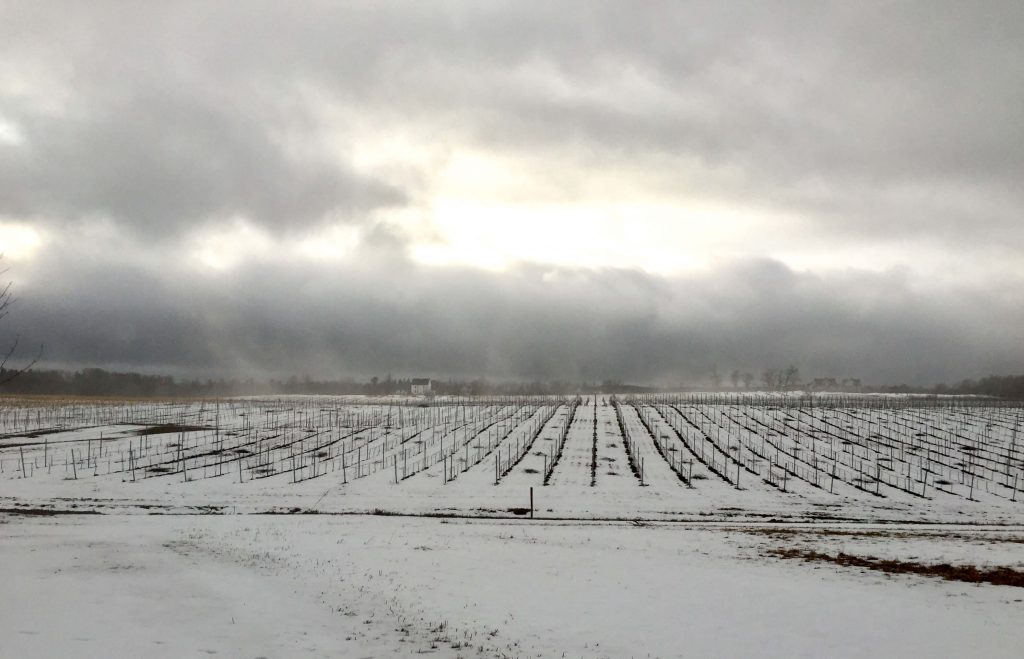
NY MUSCAT
- The NY Muscat under performed last summer and growth of this year’s fruiting canes was reduced. The foliage turned brown by mid summer, worse on the bottom of the vine. One thought was that this was due to injury caused by frequent foliar sulfur spray (Johnston Vineyards is turning organic). Nature’s Aid (Del Lowe – 902-956-1300) will be applied to the soil and the foliage in a shotgun approach to any possible, unidentified nutrient deficiency. This winter the vines were pruned to tie 2 fruiting canes together in one direction on the low fruiting wire to accommodate Muscat’s tendency to fruit more heavily at the distal part of the cane (apical dominance). There is a move in Nova Scotia to put Muscat’s fruiting canes on the top wire which reduces the need to tuck, hedge and deleaf as the canes tend to fall downward as they grow. I continue to use the lower fruiting wire because the vines are easier to weed, spray and harvest. With the exception of Cabernet Foch, growing most hybrid grapes is a relatively simple matter. However, I would recommend that all hybrid vines be grafted. Petite Milo and Petite Pearl have been attacked by Phylloxera in Nova Scotia. NY Muscat preformed better at Benjamin Bridges Vineyard grafted on 420. Seyval (3309) planted in 2016 is doing well at Johnston Vineyards.
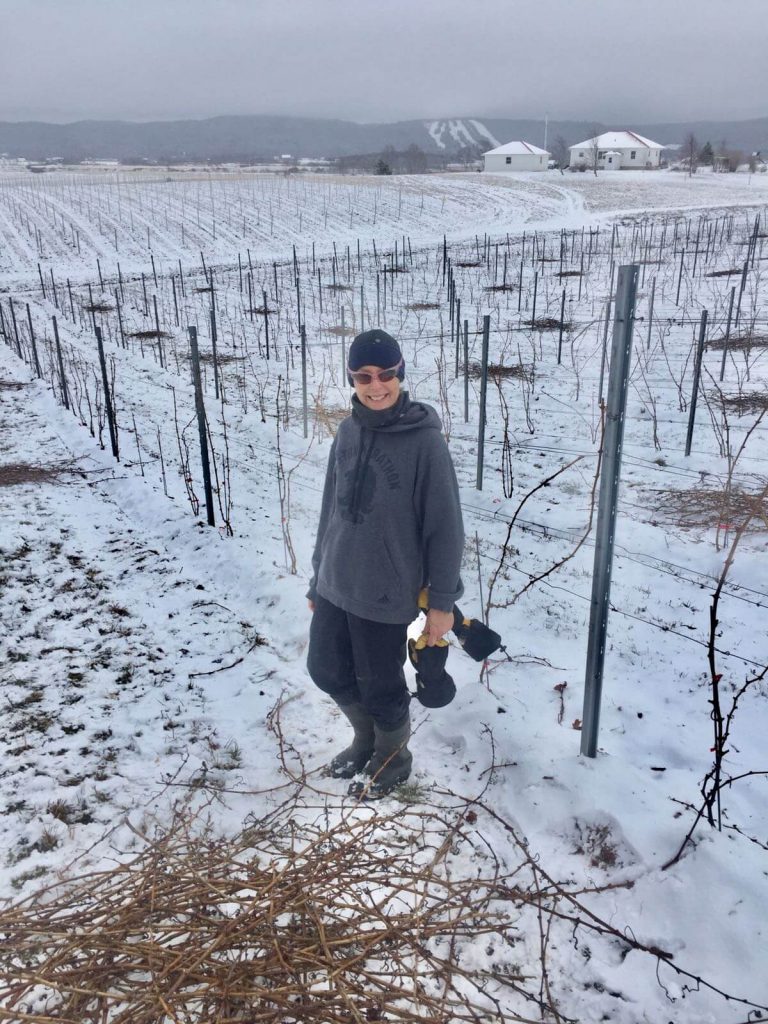
ORGANIC CERTIFICATION
- Since synthetic fertilizer was used last year, and the vineyard needs to be free from banned substances for 3 years, organic certification won’t come until 2020, even though synthetic pesticides were not applied at any time in the vineyard. Certification requirements are a hassle so I hired Kristi Barclay (Kristibarclay@gmail.com) to complete the application procedure and to guide the process. This includes all the paper work and permissions to use approved chemicals. Lise LeBlanc of LP Consulting (lise.leblanc@eastlink.ca) working with Truro Agromart (njuurlink@truroagromart.ca) has identified a plan for organic fertilizer. Alyson Bremner (abremner@truroagromart.ca) has been a great help sourcing these hard to find and more expensive products. Matthew Patterson from Lightfoot and Wolfville Winery (matthew@lighfootandwolfville.com) has been very helpful in identifying organic products for disease control.
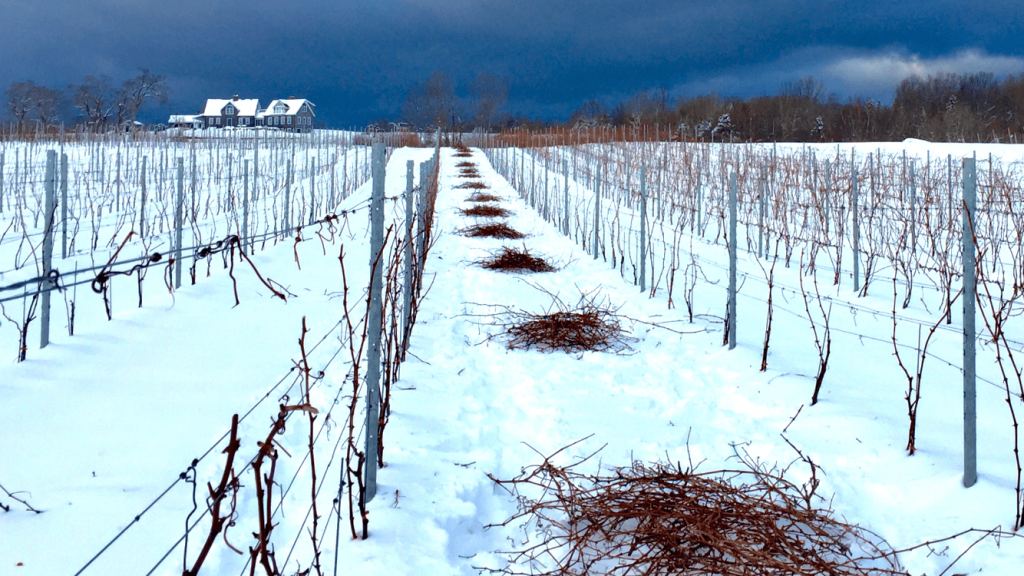
PRUNING ISSUES
- This spring it became apparent how much work raking up the cut vines and disposing of them was. With the wet spring weather it was difficult to get into the vineyard with a tractor rake and damage was done to the turf. The vines had to be hauled out to a spot where it was safe to burn them. Burning requires a permit and generally is a hassle. Much simpler is to do what most vineyards do and will happen next year – leave them where they fall and chop them up with the mower as soon as it is dry enough. A prepruner (www.youtube.com/watch?v=rNBdOnhcRxY) is being used by some vineyards recently and may be a useful option.
NEW EQUIPMENT
- A new leaf remover from Clemens (Klaus Sudbreck) was assembled by Johnston Vineyard’s farm manager Wayne Sexton. It is unique in that it sprays for Boytrytis directly onto the grapes (via the deleafer head) while it removes the leaves. This requires a spray tank (Hardi 210 gallon from VanOostrum, Port Williams). To repeat applications the deleafing function can be turned off while maintaining the spray function to provide a very localized application (cutting down on spray volume). With organic certification frequent sprays with Sulfur and copper are required making a second tractor a tempting acquisition next year. Although traditionally the wineries provide the grape bins Johnston Vineyards finds it more convenient to own their own currently numbering 12 1500 lb bins with 10 more on the way (Rainbow netting and rigging, Dartmouth 800-399-7866). Bigger bins may crush the grapes on the bottom imparting undesirable flavors to the wine. A scale is under considreation from ULine, Toronto. The wineries are busy at harvest time and mistakes are made. Bird control was achieved with Cannons (Suzanne Hawkesworth – Critters B Gone 902-788-5498) and recorded distressed bird cries (Klaus Sudbrack – Shemoque Custom and Trellis 506-533-4301). This year Johnston Vineyards will add a bigger, louder device from Phoenix Agritech (902-662-2444) located in Debert, NS, which should cover 10 acres. No bird netting was used last summer with no grape loss. This company also sells effective raccoon netting.
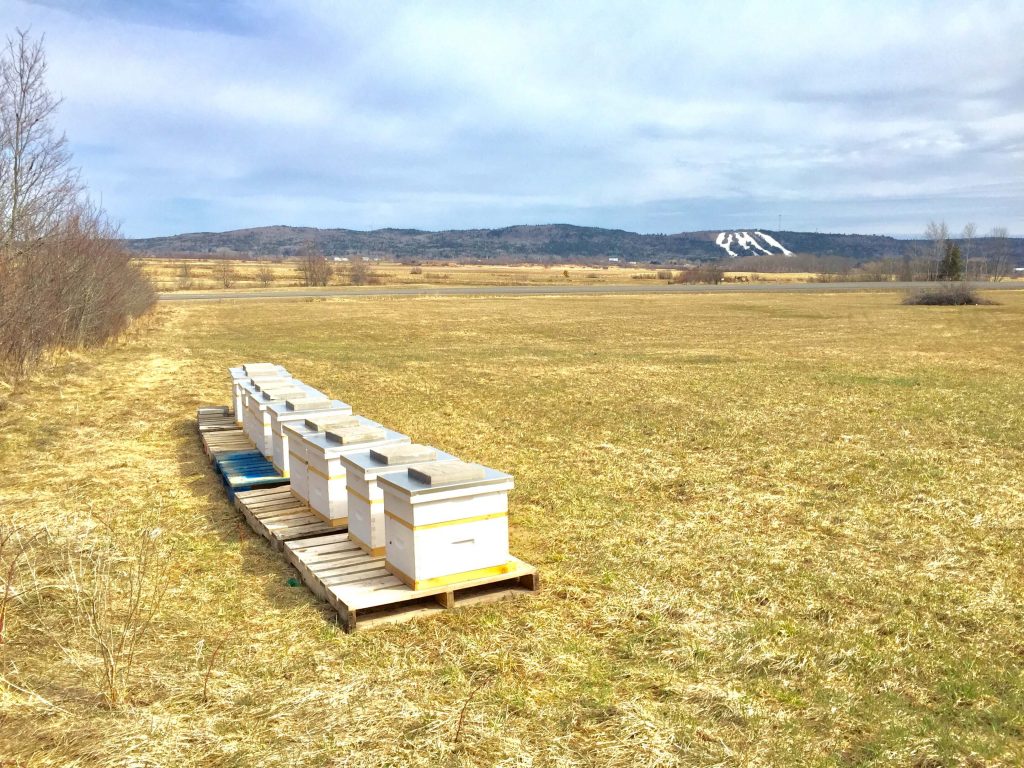
BEES
- Bees are a new addition this year with 10 hives being added early in April. Bees aren’t required for pollination of the vines, but serve to enhance the natural beauty of the vineyard and to pollinate the wildflowers that grow between the vines rows and in the headlands.
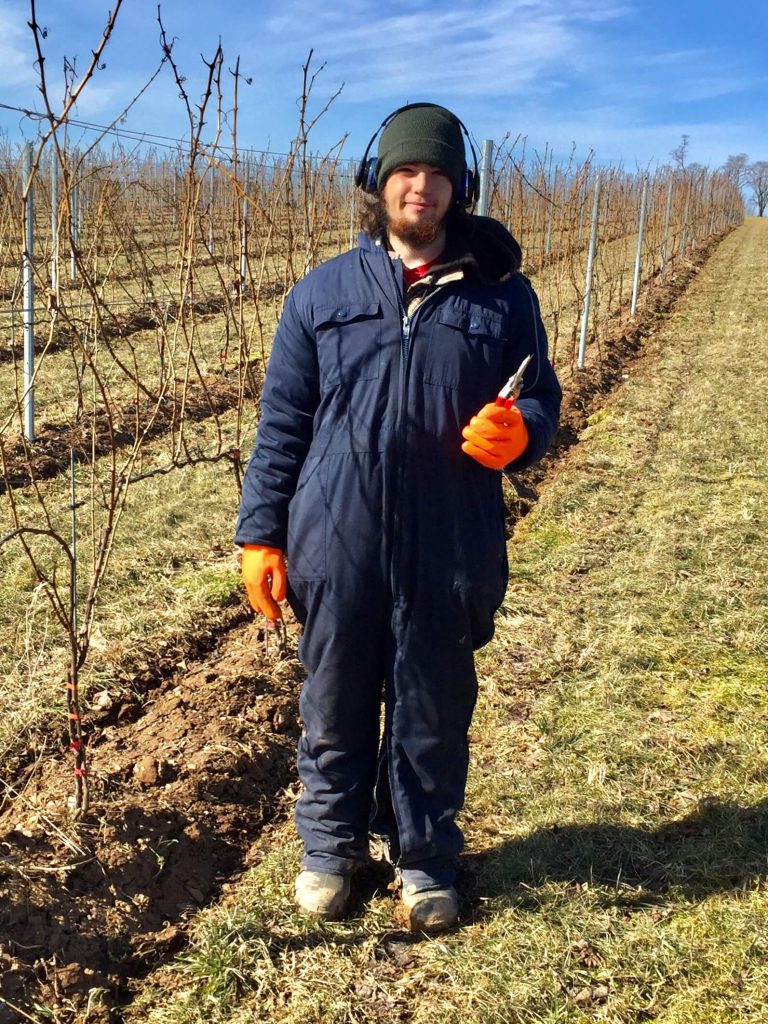
WATER ISSUES
- Despite drain tiling the entire vineyard there are areas of water retention. Eastern Tile Drainage Ltd (Jody – 902-897-353) will be returning this spring to dig down to the tiles in these areas and fill the ditches with gravel to enhance drainage. Vines really don’t like wet feet! Wayne Dimock (902-798-7700) will return with his excavator this spring to modify drainage ditches and culverts that were too small when the snow melts combined with rain. Always overestimate the size of drainage needed! Depressions in the field can be identified before planting and really need to be leveled or not planted to avoid poor vine growth.
